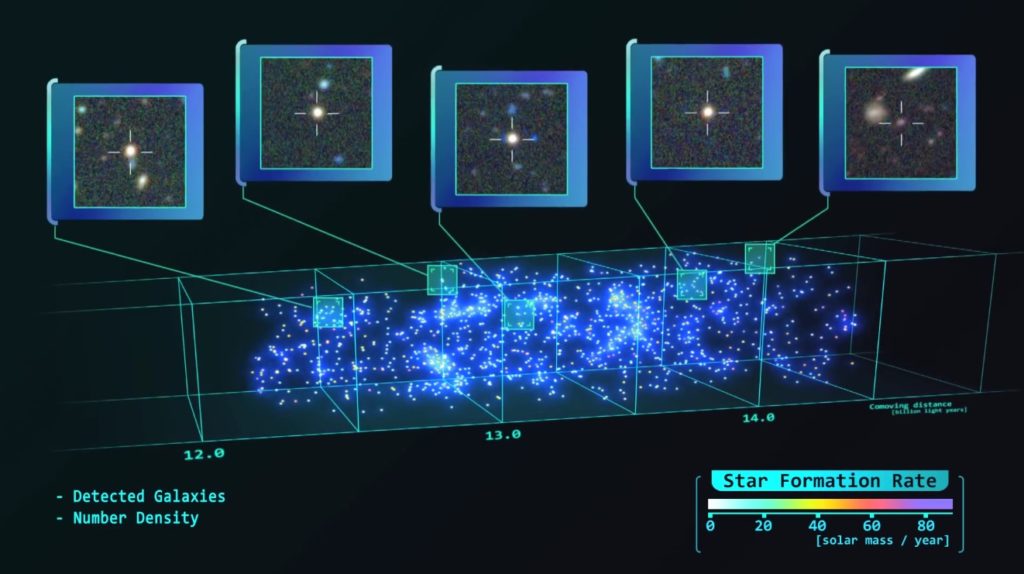Scientists have created a super-large 3D map of the young universe to see what our own galaxy, the Milky Way, looked like in its “baby days.” The map covers 4,000 early galaxies from the past. Many of those galaxies look like the Milky Way when it was a young galaxy.
This is a way scientists can observe things from the past, as it takes time for light to travel the large, cosmic distances. Although light fills a room as soon as a lamp is turned on, it takes much longer for light to arrive on far-off galaxies, which can take billions of years. Events such as supernova that we see with a telescope may actually have happened eons ago. Also, some stars that we see may have already died by the time the light arrives there. That’s why telescopes can be considered time machines when it comes to space terms.
“We used large amounts of data … to literally slice the universe in cosmic time and time-travel to the distant past with 16 well-defined cosmic-time destinations,” Sergio Santos, a team researcher at Lancaster University in the United Kingdom, said in a statement about the findings.
The researchers published two new studies in which they observed 16 different epochs of time, between 11 billion and 13 billion years ago. They discovered light from galaxies that existed when the universe was only between 7% and 20% of its age today, said the statement.
Scientists wanted to pinpoint these ages by creating a super-large 3D map. Scientists used the rate at which the universe is expanding to find out from how long ago the light originated. While the universe is expanding, the light that is traveling from any of the 4,000 galaxies gets stretched while it is traveling. The team spotted the early galaxies with the help of the Subaru Telescope in Hawaii and the Isaac Newton Telescope in the Canary Islands on the coast of northern Africa.
The team focused on distant galaxies that emit Lyman-alpha radiation, an ultraviolet wavelength connected with young galaxies that have star formations, in order to form their super-large 3D map. They studied the galaxies using 16 different narrow- and medium-band filters. They studied the ancient galactic past in an area in the constellation Sextans dubbed the COSMOS field.
“Some of these galaxies should have evolved to become like our own, and thus we are seeing what our galaxy may have looked like 11 to 13 billion years ago,” researcher Ana Paulino-Afonso, a Ph.D. student in Lancaster and Lisbon, Portugal and co-author on the study, said in the statement.
“The bulk of the distant galaxies we found are only about 3,000 light-years across in size, while our Milky Way is about 30 times larger,” Paulino-Afonso added. “Their compactness likely explains many of their exciting physical properties that were common in the early universe.”
The work was announced on Wednesday, April 4 at the European Week of Astronomy and Space Science conference in Liverpool, England. Also, the papers are published in the journal Monthly Notices of the Royal Astronomical Society.












